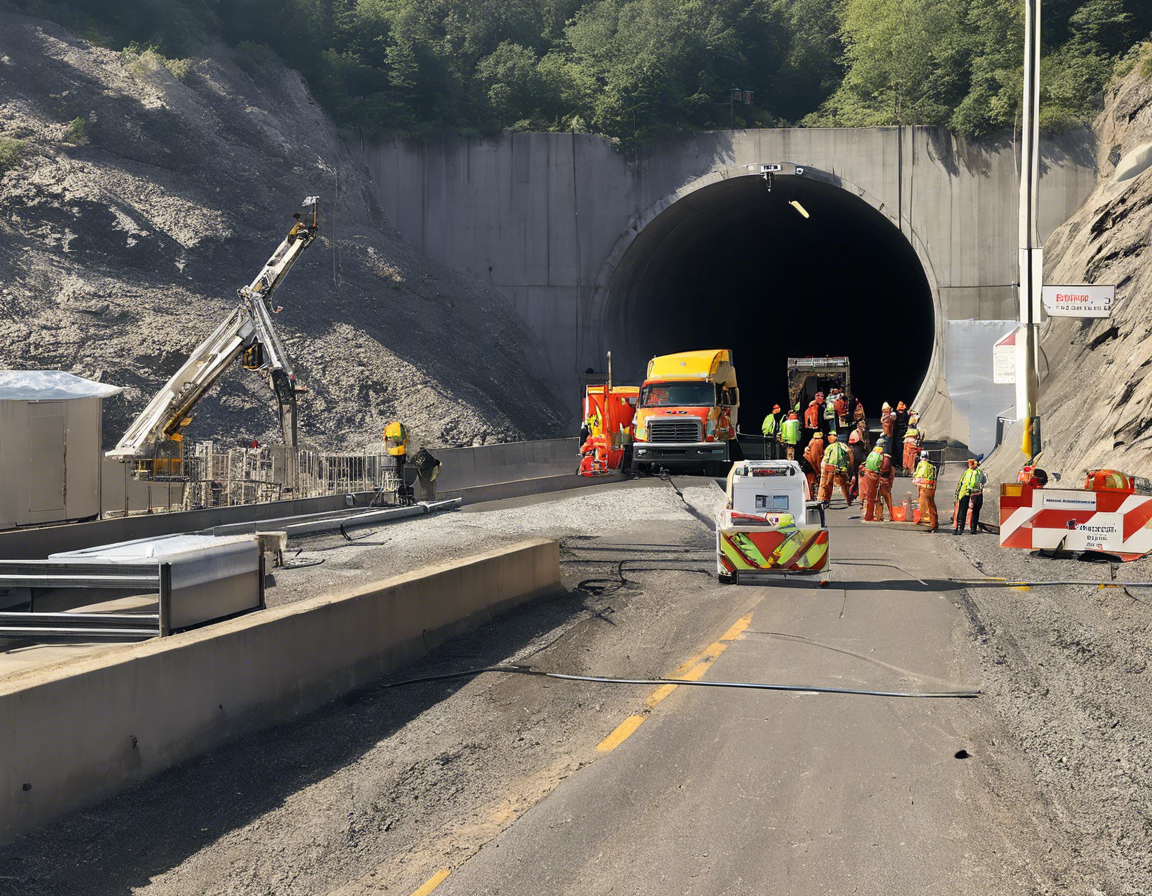In recent years, tunnel rescues have become an increasingly common occurrence due to the expansion of infrastructure development globally. Tunnel rescue operations present unique challenges for emergency responders due to confined spaces, potential structural instability, limited ventilation, and the presence of hazardous materials. This article will delve into the latest developments in tunnel rescue techniques, technology, and best practices.
Understanding Tunnel Rescues
Tunnel rescues involve the extraction of individuals who are trapped or injured inside a tunnel. These incidents can occur in various settings, including road tunnels, railway tunnels, water supply tunnels, and underground mines. The complexity of tunnel rescues necessitates a coordinated response involving multiple agencies such as fire departments, emergency medical services, technical rescue teams, and law enforcement.
Key Challenges in Tunnel Rescues
-
Limited Access: Tunnels often have restricted entry points, making it challenging for rescuers to reach the affected individuals quickly.
-
Communication Challenges: Communication breakdowns can occur due to the lack of radio signals inside tunnels, hindering coordination among rescue teams.
-
Structural Instability: Collapses or cave-ins can pose serious risks to both victims and rescuers, requiring specialized equipment for shoring and stabilization.
-
Hazardous Environments: Tunnels may contain hazardous materials, smoke, or toxic gases, further complicating rescue operations and necessitating the use of personal protective equipment.
Innovations in Tunnel Rescue Technology
-
Robotic Systems: Remote-controlled robots equipped with cameras and sensors can navigate through narrow tunnel spaces to locate victims and assess the situation.
-
Self-Contained Breathing Apparatus (SCBA): Advances in SCBA technology have improved respiratory protection for rescue personnel operating in smoke-filled environments.
-
Multi-Gas Detectors: Portable multi-gas detectors help identify and monitor toxic gases within the tunnel, ensuring the safety of both victims and rescuers.
-
High-Visibility Marking Systems: LED lights and reflective markers aid in guiding rescuers through dark and smoky tunnel conditions, enhancing visibility and navigation.
Best Practices for Tunnel Rescues
-
Risk Assessment: Conducting a thorough risk assessment before initiating rescue operations is crucial to identify potential hazards and determine the safest approach.
-
Coordination and Communication: Establishing clear communication channels and a unified command structure among all responding agencies is essential for a successful rescue operation.
-
Training and Preparedness: Regular training exercises and drills specific to tunnel rescues help ensure that responders are well-equipped to handle emergency situations effectively.
-
Personal Protective Equipment: Providing personnel with appropriate PPE, including helmets, goggles, gloves, and protective clothing, is vital for ensuring their safety in hazardous environments.
Case Studies and Lessons Learned
-
Mont Blanc Tunnel Fire (1999): The Mont Blanc Tunnel fire, which claimed 39 lives, underscored the importance of regular maintenance, emergency drills, and swift evacuation protocols in tunnel safety.
-
Gotthard Base Tunnel Rescue (2016): The successful rescue operation in the Gotthard Base Tunnel, the world’s longest rail tunnel, highlighted the significance of inter-agency cooperation and advanced technological resources in tunnel emergencies.
-
Chilean Mine Rescue (2010): The remarkable rescue of 33 miners trapped underground for 69 days in the San Jose mine exemplified the resilience of both the trapped individuals and the rescue teams involved in the operation.
Frequently Asked Questions (FAQs)
- What are the primary causes of tunnel emergencies?
-
Common causes include fires, vehicle accidents, structural failures, flooding, and mechanical breakdowns.
-
How can tunnel safety be improved to prevent emergencies?
-
Regular maintenance, enhanced ventilation systems, proper lighting, and adherence to safety regulations can help mitigate risks.
-
What are the critical steps in a tunnel rescue operation?
-
Assessing the situation, stabilizing the environment, locating and accessing the victims, providing medical care, and safely extricating individuals.
-
How do rescue teams train for tunnel emergencies?
-
Training exercises include scenario simulations, rope rescue drills, confined space training, and the use of specialized equipment.
-
What role do technology and innovation play in tunnel rescues?
- Advanced tools such as robots, drones, thermal imaging cameras, and communication systems significantly enhance the efficiency and safety of rescue operations.
In conclusion, staying abreast of the latest developments in tunnel rescue techniques and technology is essential for emergency responders and organizations tasked with ensuring public safety in tunnel environments. By adopting best practices, leveraging innovative solutions, and fostering collaboration among responding agencies, the likelihood of successful outcomes in tunnel emergencies can be greatly enhanced.
